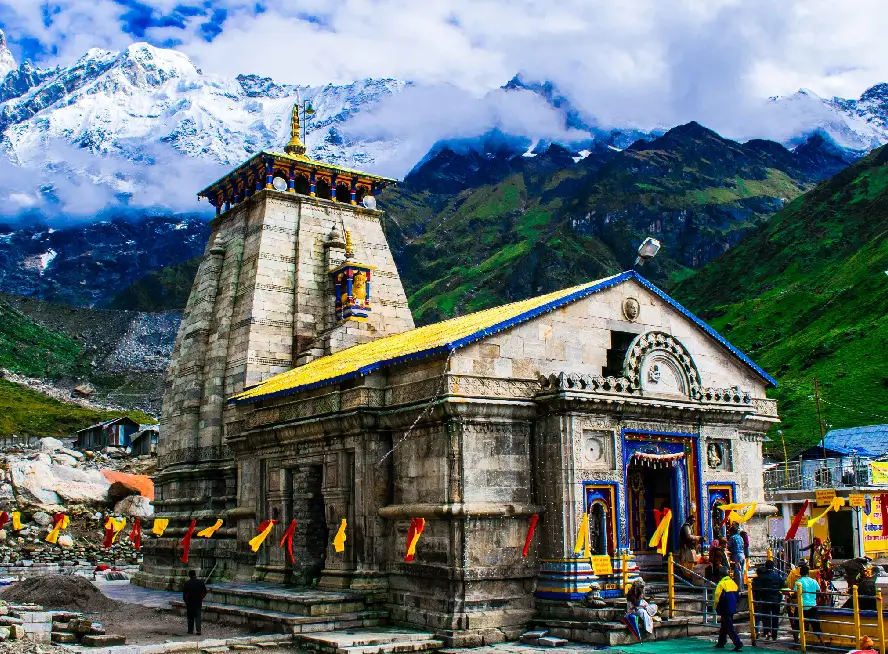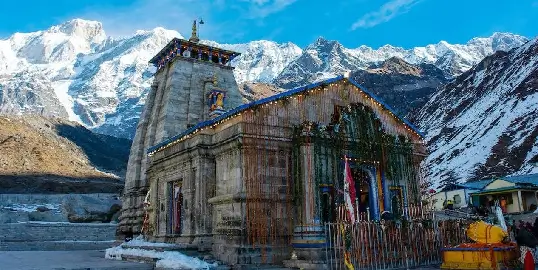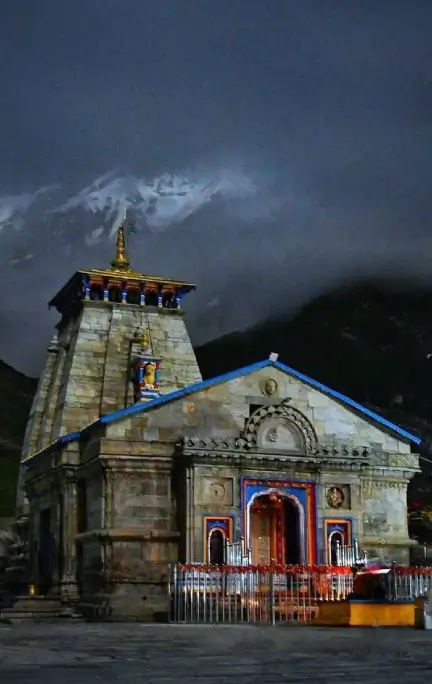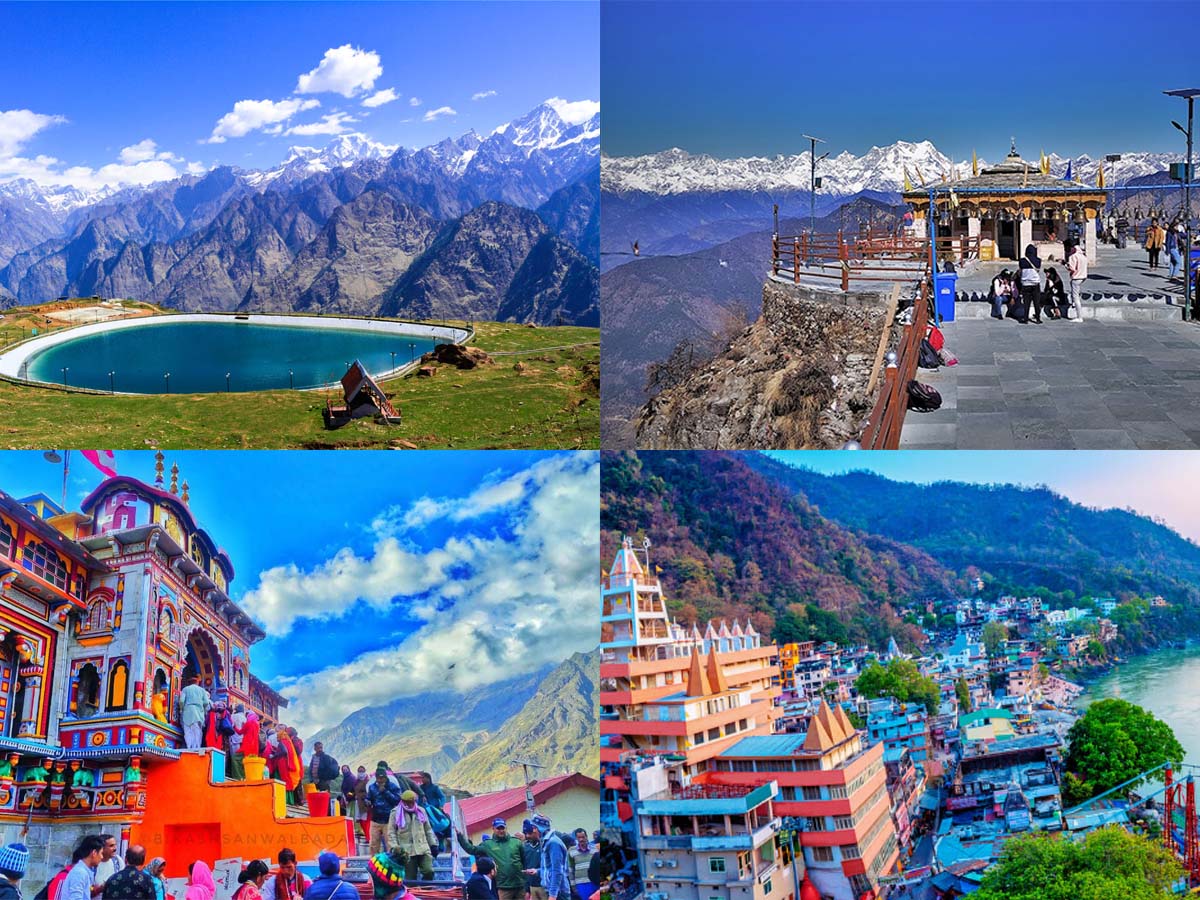Shri Kedarnath Dham

About Kedarnath Temple
Engulfed in the soulful chants of “Om Namah Shivay”, the ringing sounds of the temple bells, and wrapped in a pious aura, Kedarnath Dham is an epitome of spirituality, peace and mysticism. The holy Hindu town, situated at a majestic height of 3584 metres above sea level near the head of the sacred Mandakini River in the state of Uttarakhand, is blessed with a bewitching scenery that makes the travellers lose sense of time. Every year, the place is thronged by millions of devotees seeking blessings of Lord Shiva at the ancient Kedarnath Temple, which happens to be the most important religious attraction and a focal point of all pilgrim activity in the town.
It is said that the temple was originally built by the Pandavas from the Mahabharata fame, but was consecrated in 8th century AD by Adi Shankaracharya on his excursion across the Garhwal Himalayas. Today, the temple is the most revered shrine of the enchanting Himalayan region and sits as an important part of the Chota Char Dham Pilgrim Circuit. Additionally, it’s the first of the sacred Panch Kedar shrines and also one of the 12 Jyotirlingas dedicated to Lord Shiva
Kedarnath Dham holds a special place in the heart of every Hindu devout and Shaivite who yearns to visit this pious destination at least once in their lifetime. If you too are someone planning a pilgrimage tour here, note that the town is connected to almost every major city of Uttarakhand via a motorable road which extends till Gaurikund. Further up Gaurikund, one has to cover a paved yet gruelling pathway uphill of about 14 km. To do so, one can either embark on a trekking expedition, hire a pony or rent a palanquin which can be pre-booked from the GMVN office. Helicopter services are also available to Kedarnath.
Kedarnath Temple Opening Date 2025- 2 May
Recommended Tour Packages for Kedarnath Yatra 2025

History & Religious Significance of Kedarnath Temple
Nestled at a height of almost 12,000 feet, the present day structure of Kedarnath Temple is said to have been constructed by Hindu Guru Adi Shakaracharya in 8th century AD. However, the original shrine is believed to have existed since Vedic times and has various interesting legends and mythological stories associated with it.
According to one of them, Nar and Narayana, two incarnations of Lord Vishnu, once performed severe austerities and penance on the grounds of present day Kedarnath, seeking blessings of Lord Shiva. Pleased with their sheer devotion and prayers, Shiva appeared before them and asked them to make a wish. Extremely delighted, Nar and Narayana instantly requested Shiva to dwell permanently at Kedarnath. Since that time, Lord Shiva is believed to have been residing here in the form of a Shivlingam, freeing his true devotees from all the miseries of their life.
Kedarnath Yatra Opening Dates and Timings
The Kapat (temple doors) of Shri Kedarnath Ji Temple are opened for devotees every year in the months of April-May, precisely on the auspicious day of Akshay Tritiya. With the onset of winters, i.e. starting November, typically on the day of Kartik Purnima, the temple is closed for six months. The exact date of opening and closing, however, is formally decided and announced by the priests of the temple after calculation of the Panchang (Hindu religious calendar and almanac). For 2025, the tentative opening date of Kedarnath Temple is 2 May and closing date is November, the eve of Bhaiya Dooj. As for the daily timings, the temple remains open between 4.00 AM to 3.00 PM, and 5.00 PM to 9.00 PM every day. There’s a two hours break between 3.00 PM and 5.00 PM, during which the temple kapat (doors) are closed to the general public the darshans

The second legend narrates that the temple came into existence during the time of Pandavas from the fame of Hindu epic, Mahabharata. According to the story, the Pandavas, burdened with the guilt at having killing their own cousins in the infamous war of Kurukshetra, sought forgiveness from Shiva. Not wanting to release the five brothers from the burden of their sins so easily, Shiva disguised himself in the form of a bull and eluded them repeatedly in the Garhwal Himalayas by hiding under the ground. Nevertheless, his hump was accidentally visible at a place, and Bhima was quick to recognize it. Ripping apart the two mountains amidst which Shiva hid, Bhima caught hold off his hump, and that is when Lord Shiva blessed the Pandavas, absolving them of all their sins. It is said that at the very site where this episode took place, Pandavas built a small temple and worshipped Shiva to attain salvation. The Shivalinga that is formed inside the temple is in the shape of a cone, and resembles the protruding hump of Shiva.
As per geologists, the Kedarnath Temple hid under the snow for 400 years during the little ice age, and came to be discovered many years later in the 8th century AD by the great sage, Adi Shankaracharya. Acknowledging the religious essence of the shrine, Shankaracharya consecrated the temple again and reinstated it to its original glory. Needless to say, Kedarnath Temple is today the most sacred Hindu pilgrimage shrine and is visited by millions of devotees every year seeking the path of salvation.
Best Time to Visit Kedarnath Dham
The Kedarnath Temple is open for pilgrims only for a brief period of six months i.e. during summers, which is late-April until mid-November. Even during this timeframe, the months of May-June and September-October prove to be the most ideal, offering perfect ambience and pleasant weather. July to August happen to be the monsoon months, bringing heavy showers that often result in severe road blockages and landslides. However, Kedarnath Temple can be visited during this time too. It is worth noting that Kedarnath Temple is closed for the entire duration of winters i.e. beginning November until April. This is done due to harsh weather conditions and extreme snowfall that renders the town inaccessible.
How to Reach Kedarnath?
Kedarnath Dham is said to be the remotest and most difficult of the Char Dham Circuit of Uttarakhand. Having said so, it can still be reached by three modes of transport, the details of which are given below.

By Air : The nearest airport to Kedarnath Dham is the Jolly Grant Airport in Dehradun. It sits 238 km away from the temple town. Travellers can either board a state run bus or hire a private taxi up till Gaurikund, from where Kedarnath is 14 km hike uphill via a paved pathway.

By Road : Kedarnath is connected to all the major cities of Uttarakhand including Dehradun, Rishikesh and Haridwar via a motorable road that ends at Gaurikund. Further up Gaurikund, travellers need to hike a paved pathway for about 14 km. Those who want to avoid the trek can also opt for ponies, palanquins and dolis, which are easily available.

By Train : The nearest railway station is Rishikesh, located approximately 216 km from Kedarnath. Again, buses and taxis are easily available up till Gaurikund, from where it’s an uphill climb till Kedarnath.
